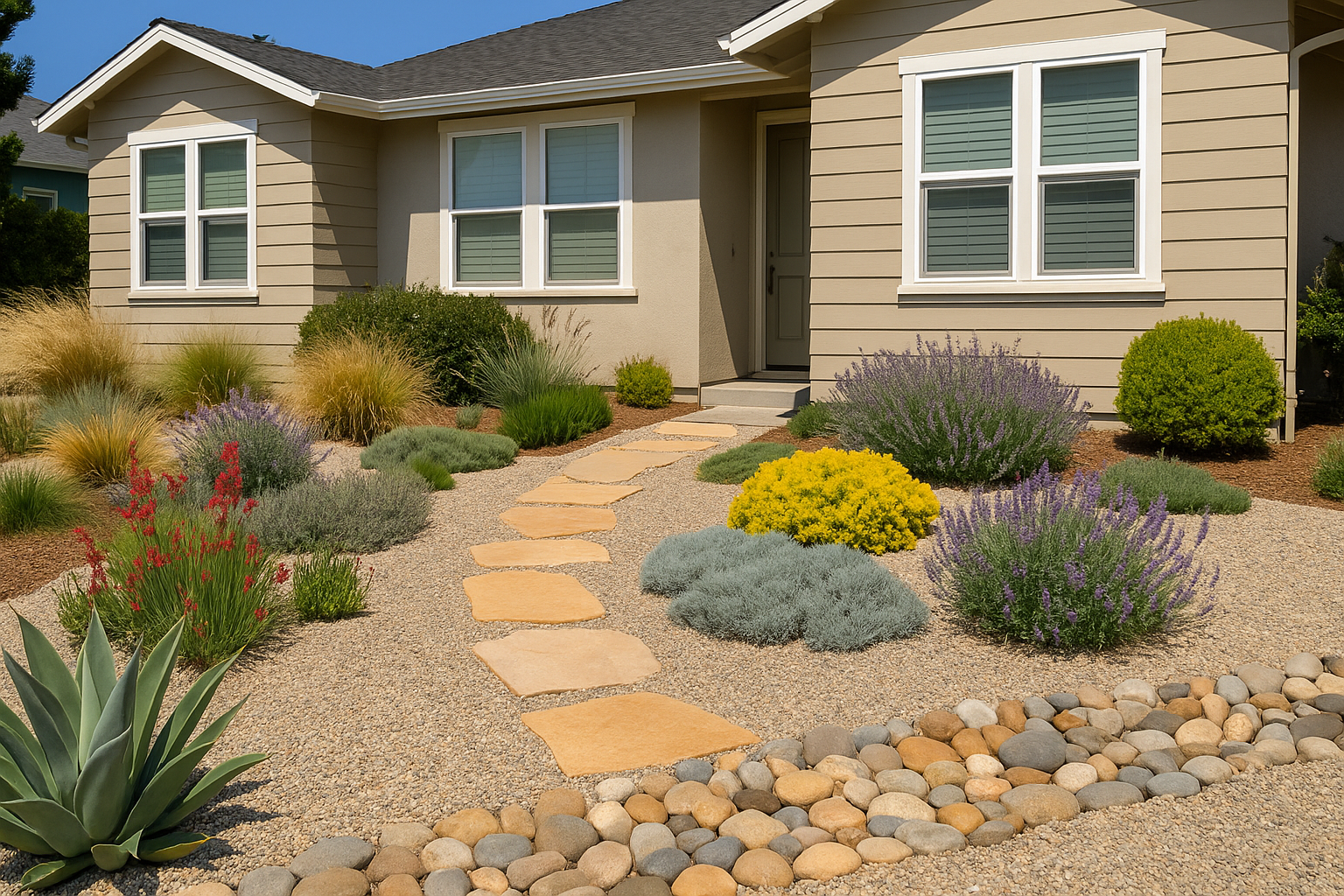In a world where climate change, rising water costs, and environmental consciousness are reshaping how we live, xeriscaping is no longer just a desert-friendly landscaping solution—it’s a smart, sustainable design choice for modern homes everywhere.
Whether you live in an arid region or simply want to cut back on water usage, xeriscaping offers a practical yet visually compelling approach to landscape design. It blends conservation, beauty, and resilience into a system that works in harmony with nature, not against it.
Let’s explore 22 ways xeriscaping can transform your outdoor space—and why it’s one of the most valuable trends in modern residential landscaping.
1. Understanding Xeriscaping

Xeriscaping is a landscaping philosophy focused on minimizing water use without sacrificing style. It goes beyond drought tolerance—it’s about thoughtful design, soil health, and long-term sustainability.
2. Ditch the Lawn (or Reduce It)
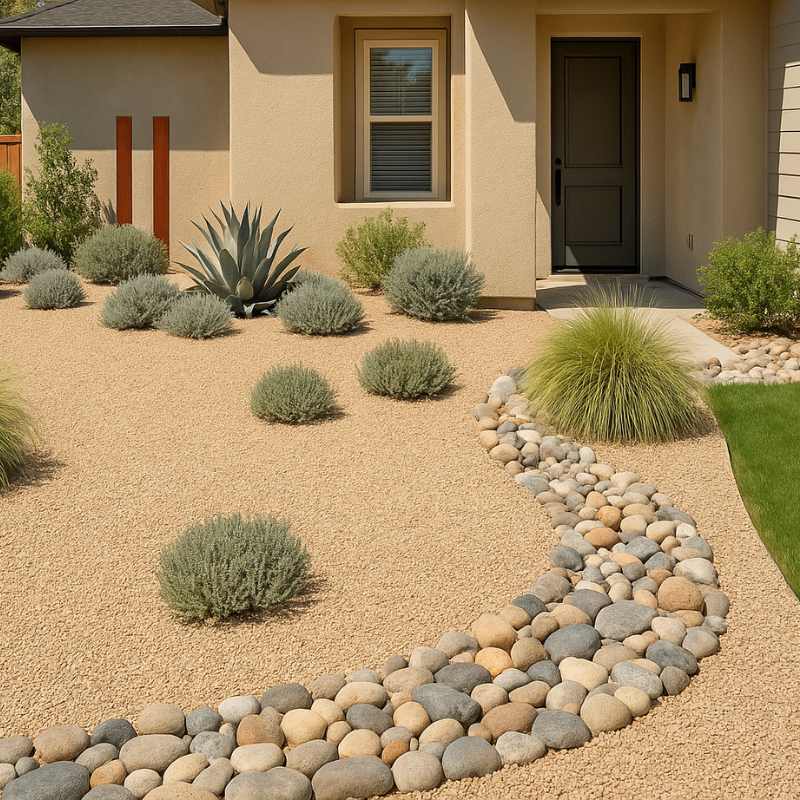
Lawns are notoriously thirsty. Replace turf with native grasses, groundcovers, or decorative gravel. If you must have grass, opt for a smaller patch of drought-resistant varieties like buffalo grass or zoysia.
3. Start with Soil Health

Healthy soil holds water better. Improve poor soil by incorporating compost and mulch. Some xeriscapes thrive with sandy or rocky soil, while others benefit from added organic matter.
4. Native Plants Are Your Best Friends
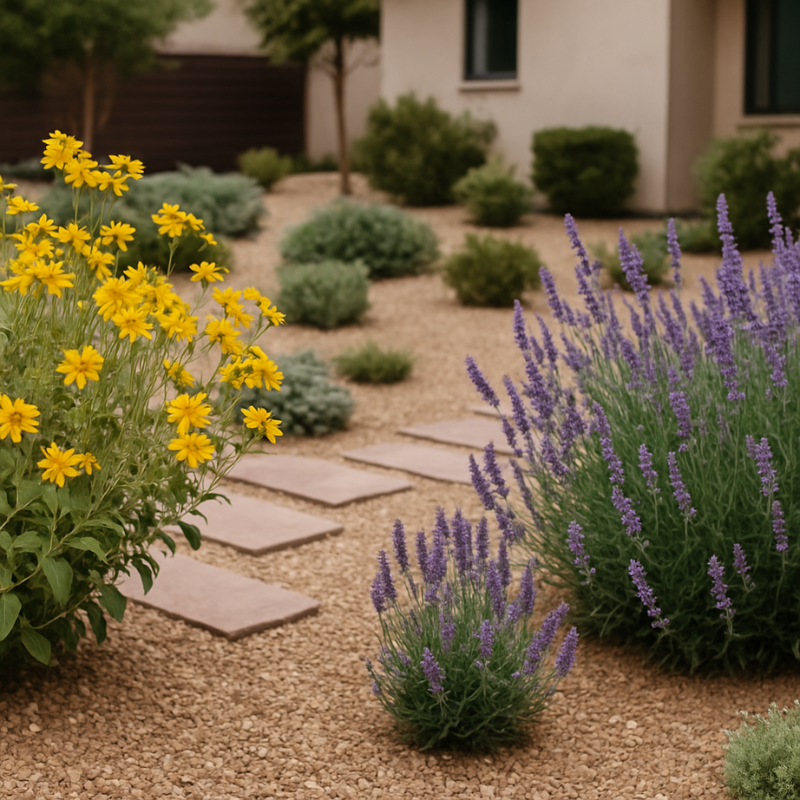
Use plants native to your region—they’ve evolved to survive local weather patterns and often need little to no irrigation once established. They’re also essential to local biodiversity.
5. Group by Water Needs (Hydrozoning)
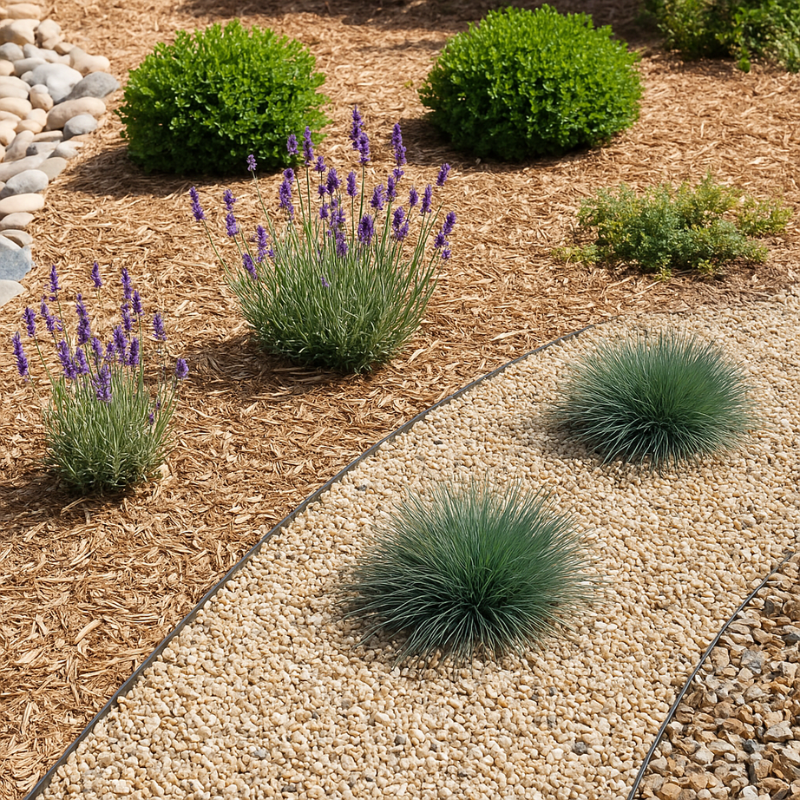
Place plants with similar water requirements together. This makes watering more efficient and reduces waste while ensuring every plant gets just what it needs.
6. Choose Smart Mulch
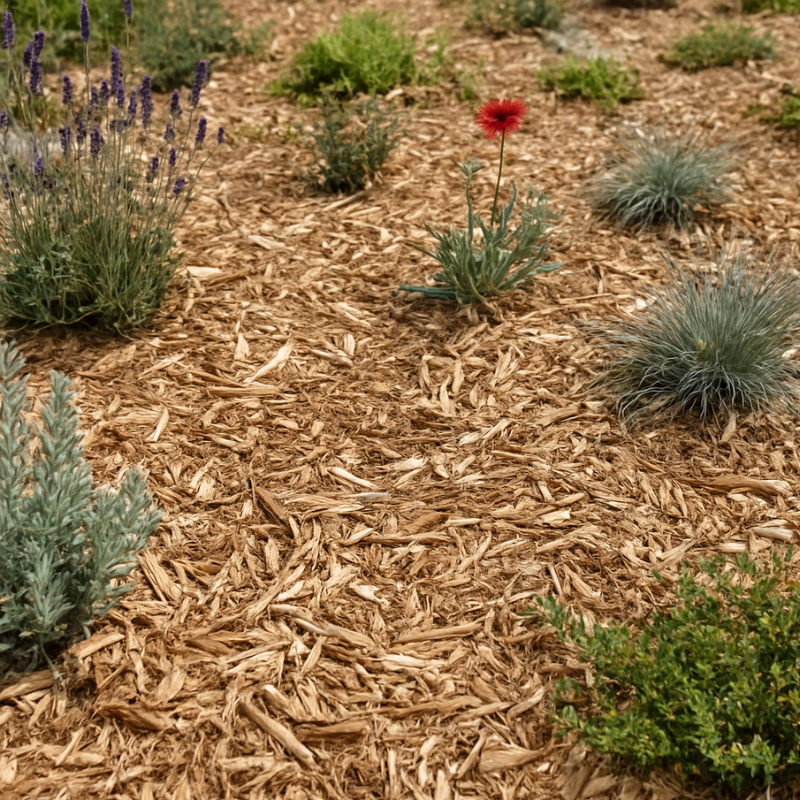
A thick mulch layer reduces evaporation, keeps roots cool, suppresses weeds, and improves soil over time. Use wood chips, gravel, or bark, depending on your design.
7. Integrate Hardscaping
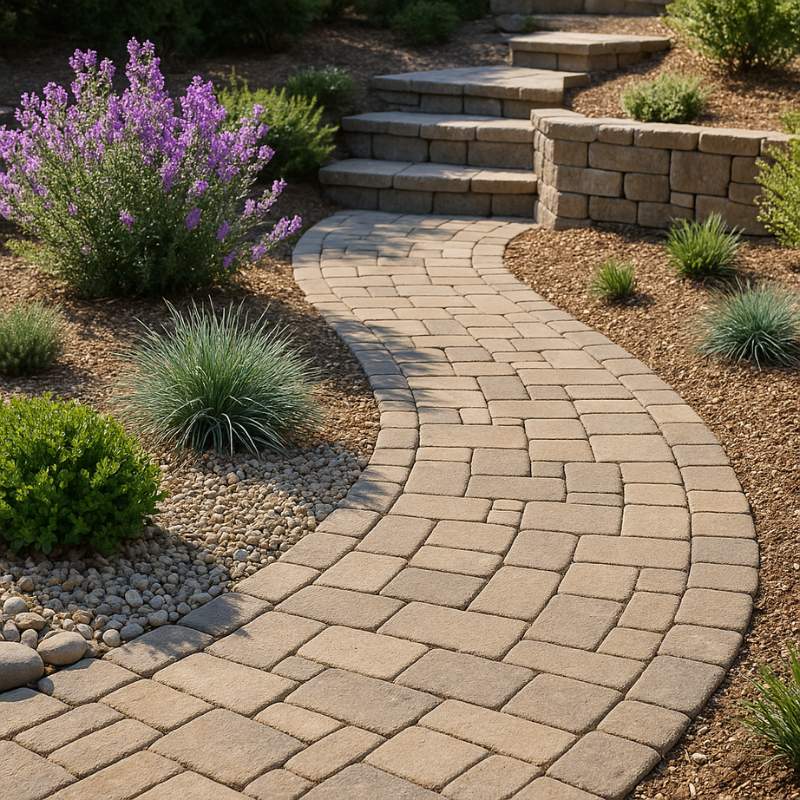
Patios, paths, and retaining walls not only define the space—they reduce the need for irrigation and mowing. Permeable pavers can even help with groundwater recharge.
8. Drip Irrigation Over Sprinklers
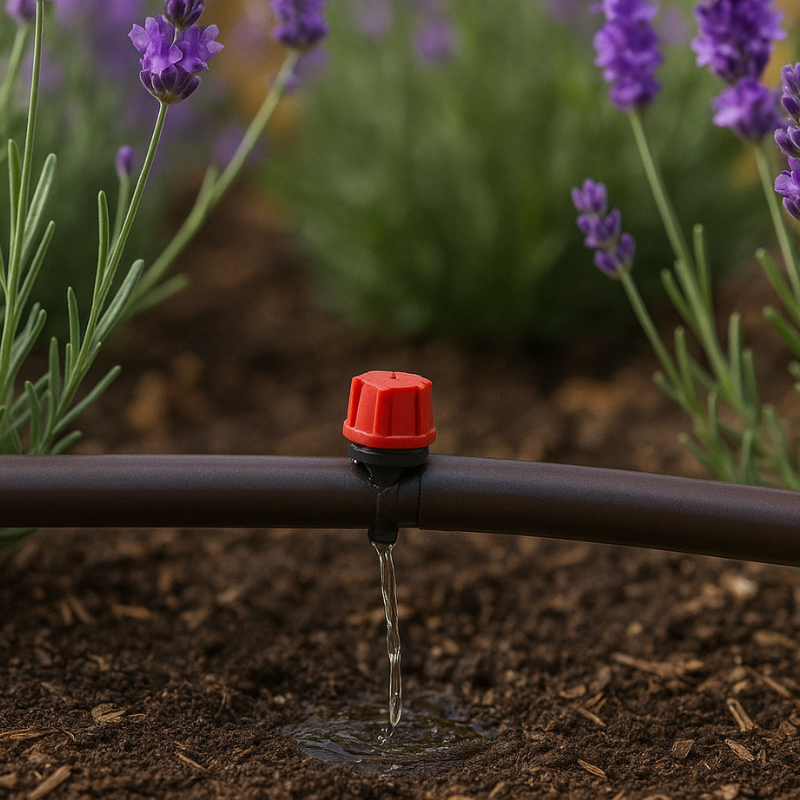
Drip systems deliver water directly to the roots, avoiding waste from evaporation and runoff. They’re more precise and cost-effective for xeriscape gardens.
9. Plan for Rainwater Harvesting
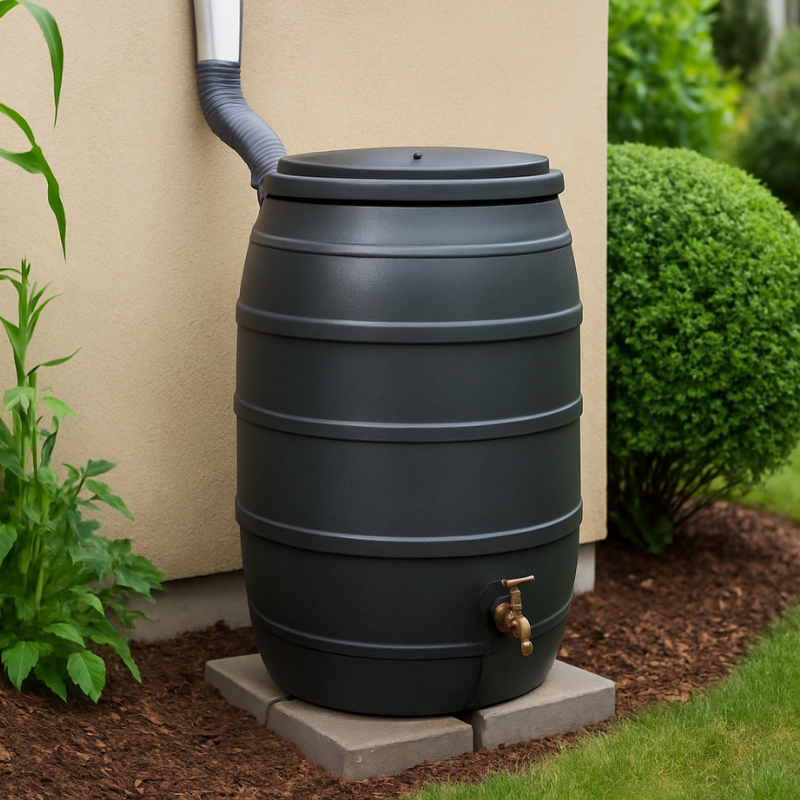
Collect rainwater from roofs using barrels or underground tanks and reuse it for irrigation. It’s simple, sustainable, and perfectly complements a water-wise garden.
10. Design with the Sun in Mind
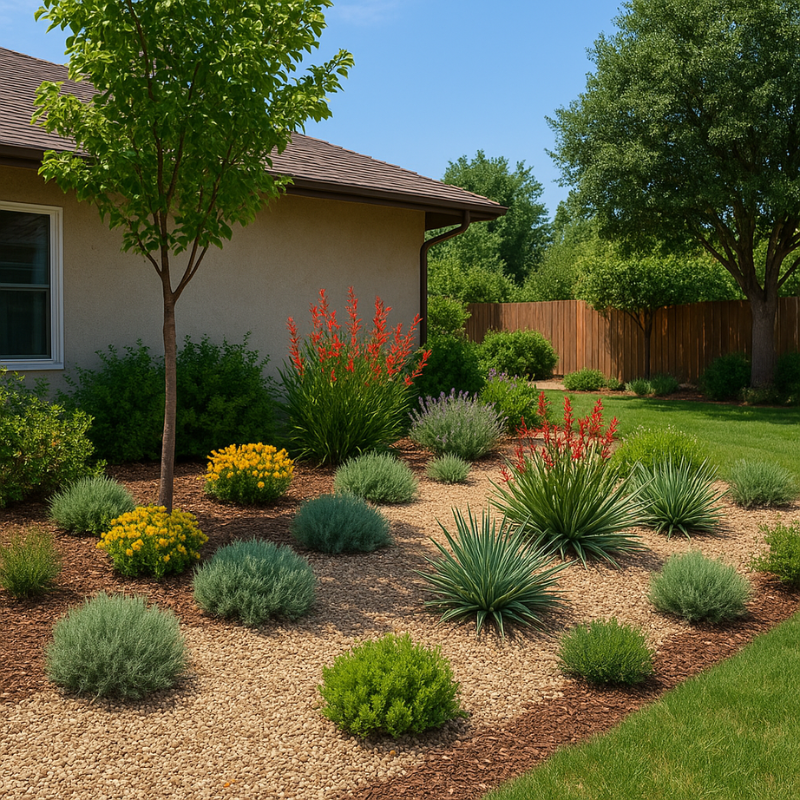
Track the sun across your yard and plant accordingly. Shade-tolerant species go under trees or eaves, while sun-lovers thrive in open areas.
11. Low-Growing Groundcovers Instead of Turf
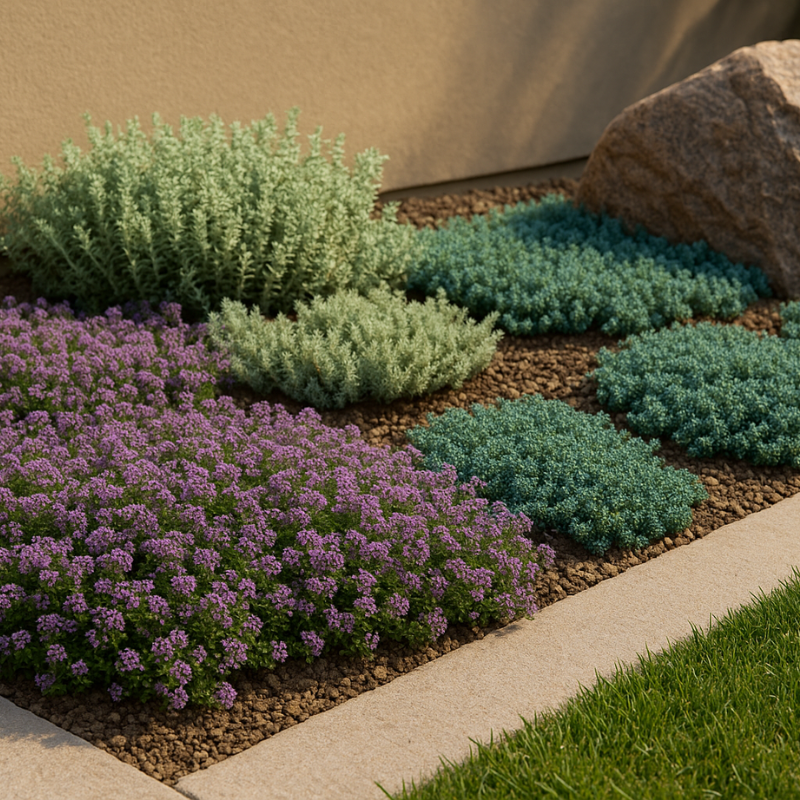
Creeping thyme, woolly yarrow, and blue star creeper offer visual interest and coverage without guzzling water like traditional lawn grasses.
12. Plant for Pollinators

Xeriscaping doesn’t mean sacrificing wildlife. Include nectar-rich plants like lavender, salvia, or native wildflowers to support bees and butterflies.
13. Think Texture and Form
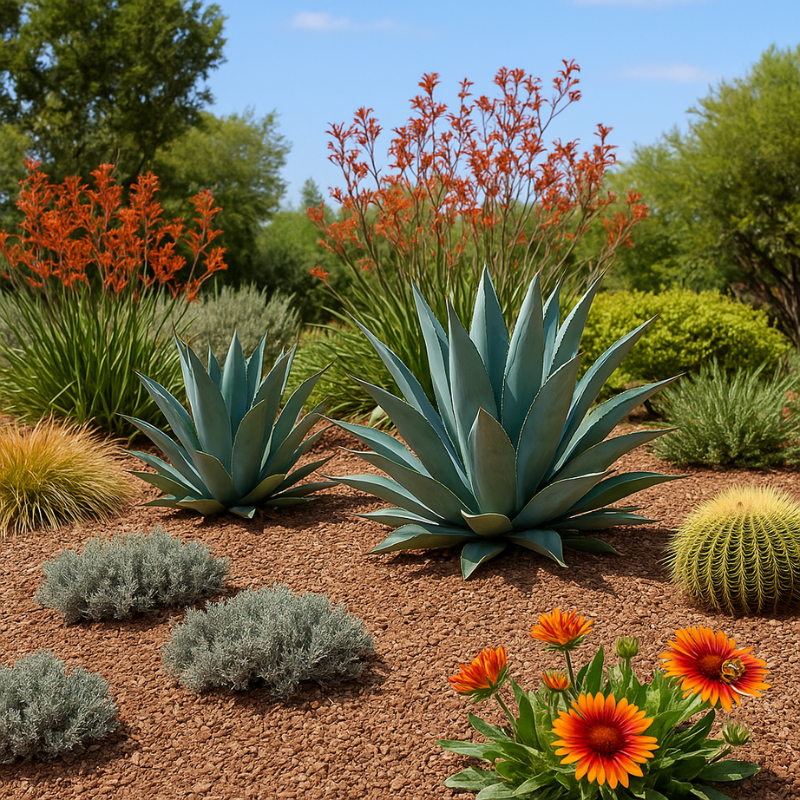
Mix heights, leaf shapes, and colors to build visual interest. Drought-tolerant plants like agave, kangaroo paw, and lomandra bring architectural beauty to the garden.
14. Shade Where You Can
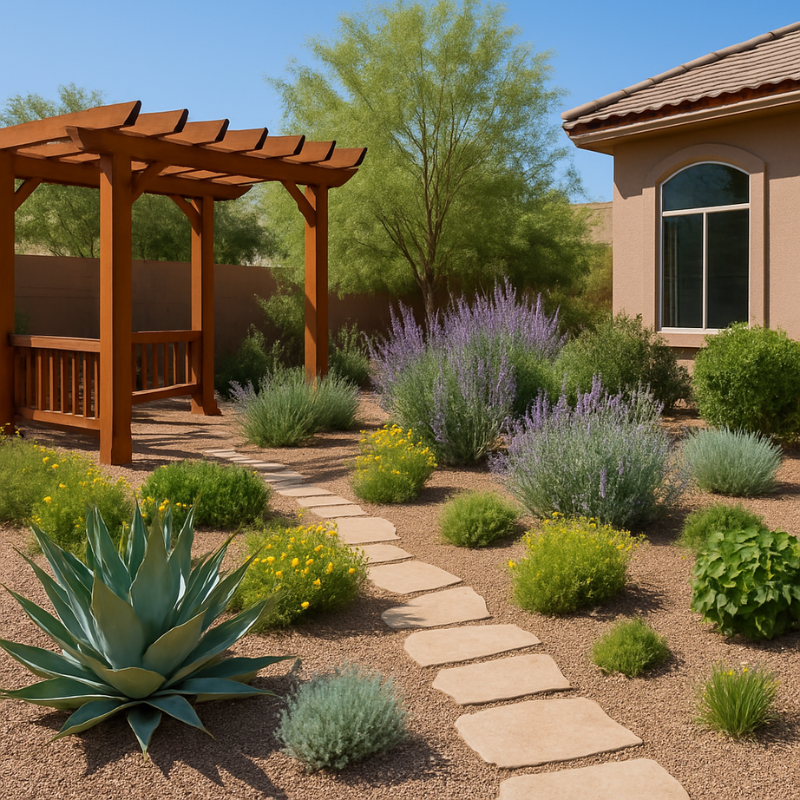
Incorporate shading elements like pergolas, trees, or even tall shrubs to reduce heat in garden zones and prevent water loss.
15. Control Runoff with Swales and Berms
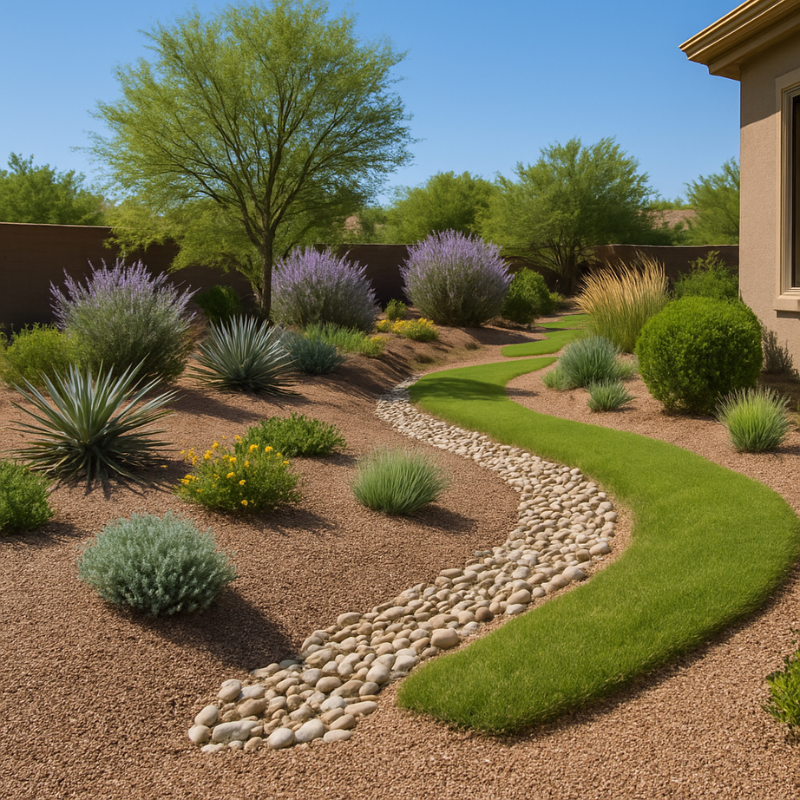
Contour your land to slow and capture rainwater. Swales (shallow ditches) and berms (raised areas) keep water on-site longer, nourishing your plants.
16. Go Beyond Gravel
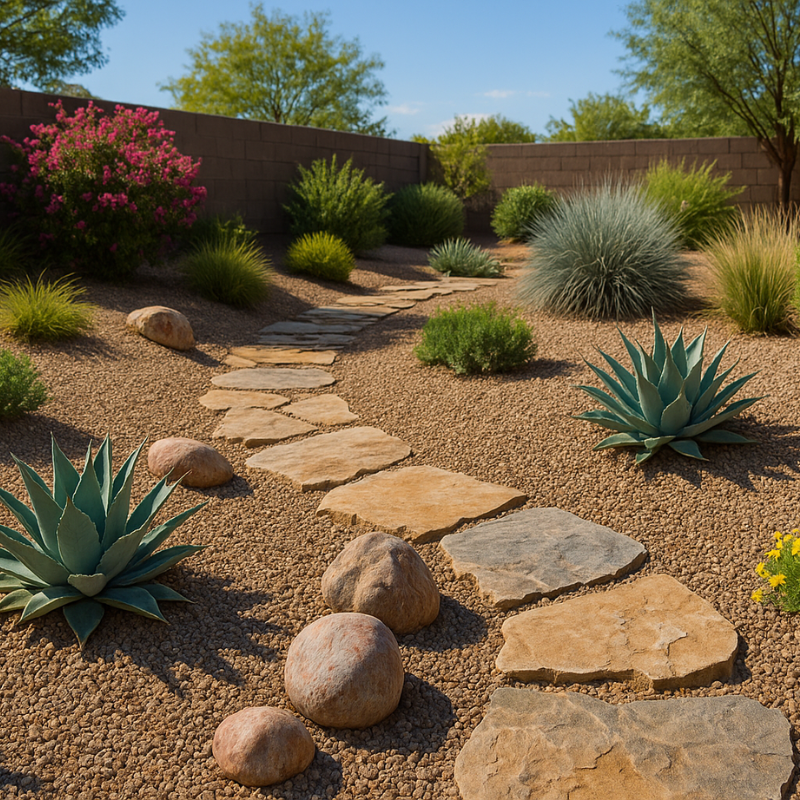
Gravel has its place, but use it thoughtfully. Pair it with succulents or grasses and vary texture with flagstone, decomposed granite, or decorative boulders.
17. Evergreen Structure

Incorporate evergreen shrubs or drought-tolerant trees to maintain structure and greenery year-round, even when other plants go dormant.
18. Use Water Features Wisely
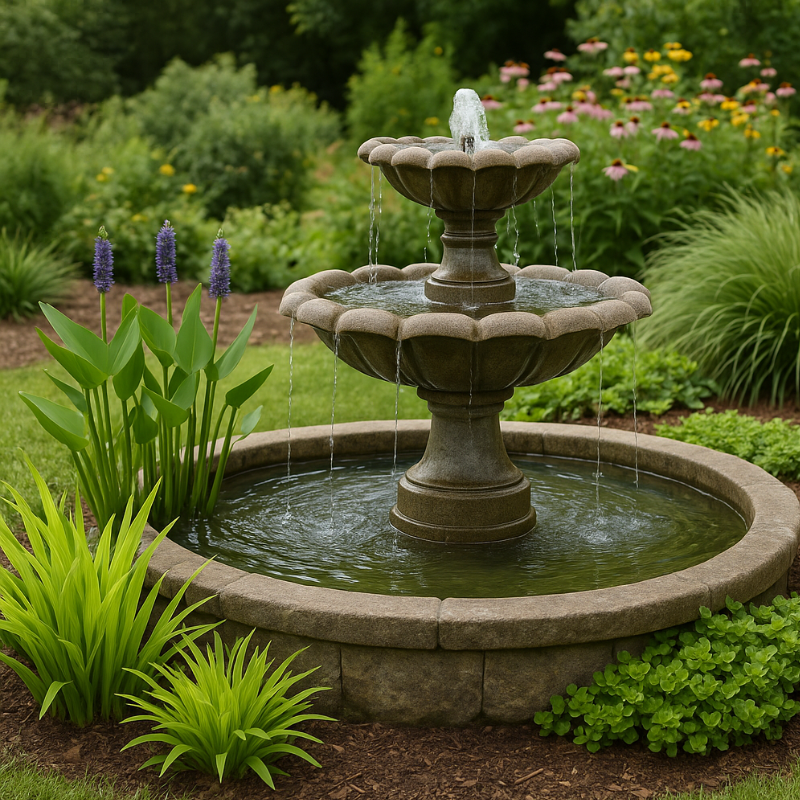
If you want a fountain or pond, keep it small and recirculating. Incorporate aquatic plants that help filter and oxygenate the water.
19. Seasonal Color Without the Thirst
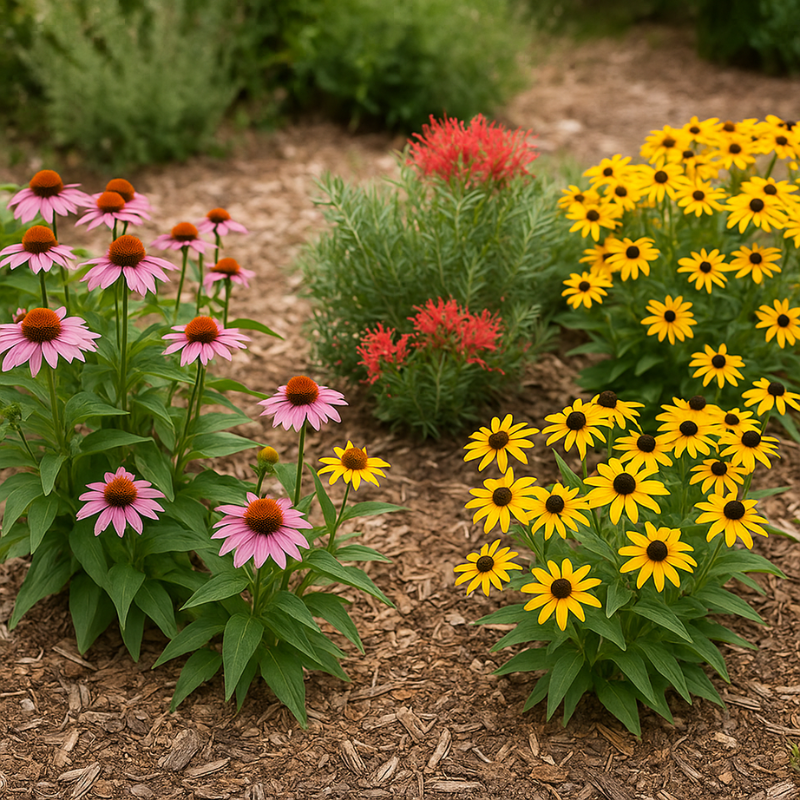
Opt for perennials that thrive with minimal water. Think echinacea, rudbeckia, grevillea, or native daisies for bursts of color across the seasons.
20. Set It and Forget It (Almost)
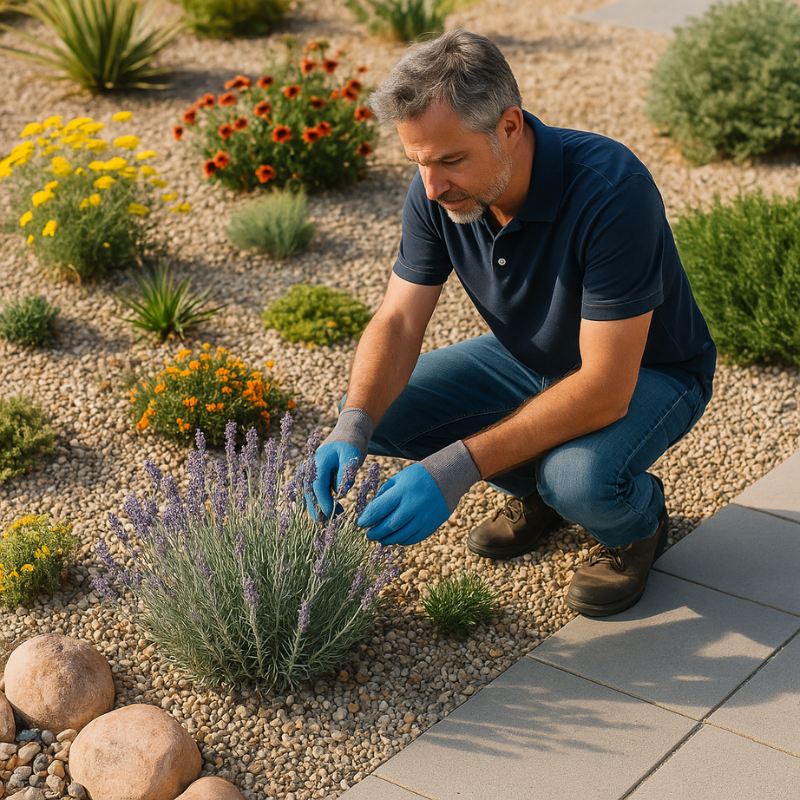
Once your xeriscape is established, it’s largely self-sustaining. Occasional weeding, pruning, and checking your irrigation system are all that’s needed.
21. Boost Property Value
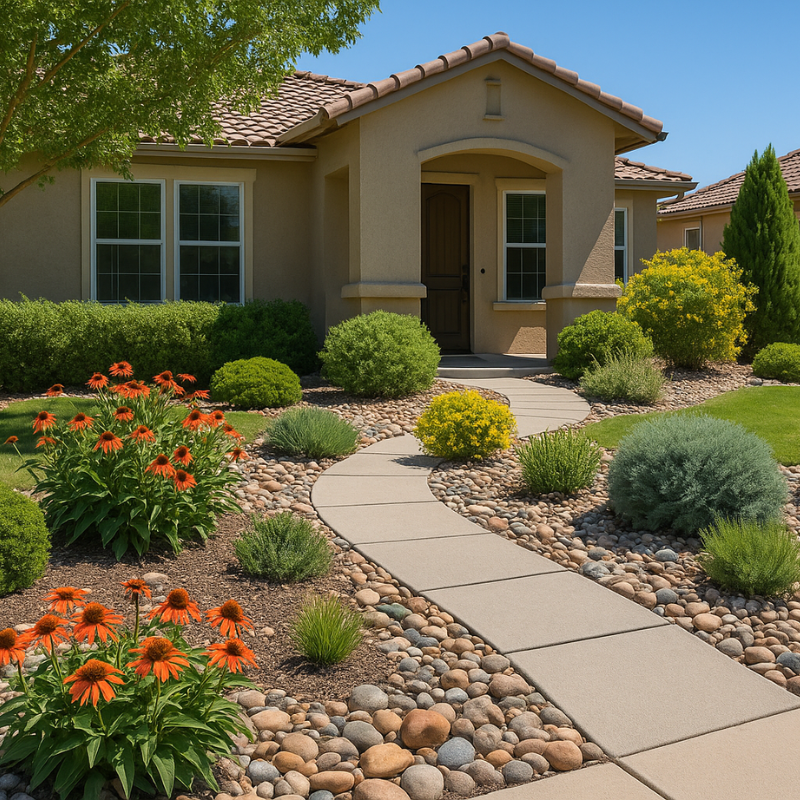
Water-wise landscaping isn’t just practical—it adds serious curb appeal. Buyers today increasingly value sustainability and low-maintenance outdoor living.
22. Align Your Values with Your Landscape
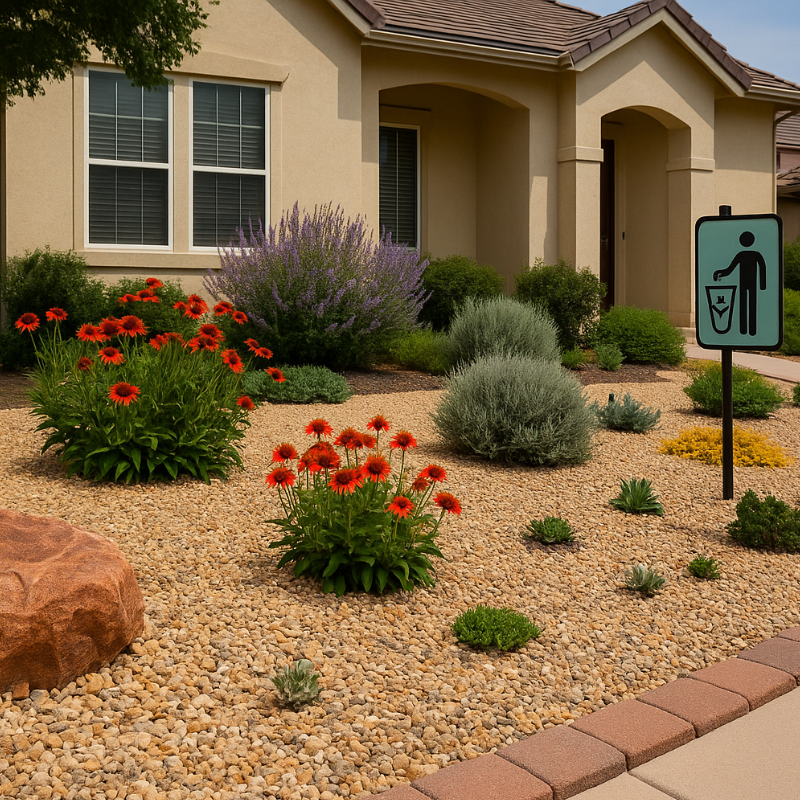
A xeriscaped yard speaks volumes—it shows you care about environmental responsibility, smart design, and resilient living. It’s more than a trend; it’s a lifestyle choice.
Final Thoughts
As water becomes an increasingly precious resource, xeriscaping offers a beautiful way forward. It challenges the conventional idea that more water equals a better garden—and proves that with the right design, you can have a stunning, lush, and sustainable landscape that thrives in harmony with nature.
At Ideas for Architecture, we believe that modern homes should reflect the values of their time—efficiency, beauty, and environmental stewardship. Xeriscaping checks all the boxes.
Ready to rethink your landscape the water-wise way? Explore our blog for more eco-smart design ideas, or get in touch to collaborate on your sustainable outdoor vision.





